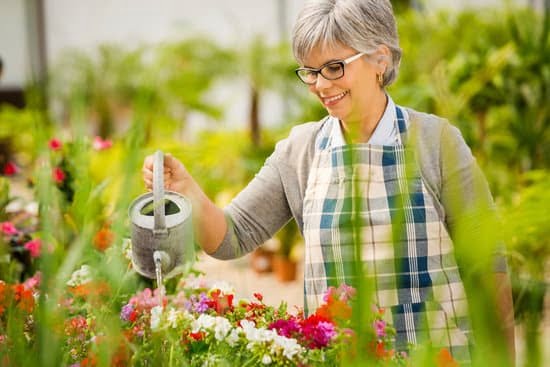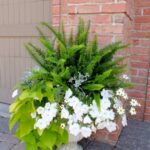Are you looking to create a thriving vegetable garden in a small space? If so, you’ve come to the right place. In this article, we will explore some innovative vegetable garden design ideas for small gardens that will help you make the most of your limited space. Whether you have a tiny backyard, balcony, or even just a windowsill, there are plenty of creative ways to cultivate a bountiful harvest of fresh, homegrown vegetables.
One of the key advantages of growing your own vegetables in a small space is the ability to have easy access to fresh produce right outside your door. With the right planning and design, even the tiniest of spaces can yield an impressive variety of tasty and nutritious crops. From maximizing space with container gardening to utilizing vertical planting techniques, there are plenty of methods for creating a productive and visually appealing vegetable garden in small gardens.
In this article, we will discuss various aspects of designing and maintaining a small vegetable garden including assessing your space, container gardening, vertical gardening, companion planting, creative design ideas, maintenance tips as well as harvesting and enjoying the fruits of your labor. So whether you’re a novice gardener or an experienced green thumb looking for new inspiration, stay tuned for some helpful tips and tricks on how to create the perfect vegetable garden in your small outdoor space.
Assessing Your Space
When it comes to designing a vegetable garden in a small space, one of the first steps is to assess the available area and determine the best layout for your garden. Here are some tips for maximizing the use of your small space:
- Start by measuring the dimensions of your gardening area, including any potential vertical space such as walls or fences.
- Make note of any obstacles or limitations in your space, such as shade from neighboring buildings or trees, drainage issues, or strong winds.
- Consider how much sunlight your garden area receives throughout the day, as this will affect which vegetables will thrive in your space.
- Take into account any existing landscaping features that could be incorporated into your vegetable garden design, such as pathways, patios, or existing flower beds.
After assessing your space and taking into account all these factors, you can then determine the best layout for your small vegetable garden. Whether you choose raised beds, containers, or vertical gardening methods, thoughtful planning and consideration of your space will help you make the most of a small area.
Remember that with careful planning and creative problem-solving, even a small urban garden can yield a bountiful harvest. With these vegetable garden design ideas for small gardens in mind, you’ll be well on your way to creating a thriving and beautiful vegetable garden in even the smallest of spaces.
Container Gardening
When it comes to vegetable garden design ideas for small gardens, container gardening is a fantastic option. This method allows you to make the most of your limited space by utilizing pots and raised beds to grow a variety of vegetables. Here are some container gardening tips to help you maximize your space and yield:
- Choose the Right Containers: Select pots and raised beds that are appropriate for the size and type of vegetables you want to grow. Ensure that they have adequate drainage holes to prevent waterlogging.
- Strategic Placement: Place your containers in areas that receive sufficient sunlight for the types of vegetables you want to grow. Remember, leafy greens may tolerate partial shade better than fruiting plants like tomatoes or peppers.
- Soil Selection: Use high-quality potting mix for containers and raised beds, as they provide good drainage and nutrient availability. Consider mixing in compost or organic fertilizers for added nutrients.
- Companion Planting in Containers: Just because you have limited space doesn’t mean you can’t utilize companion planting techniques. Pairing compatible vegetables in the same container can encourage growth and deter pests.
Container gardening offers endless possibilities for growing a wide range of vegetables even in small spaces. With careful planning and maintenance, you can cultivate a bountiful harvest right on your patio, balcony, or even windowsill.
Vertical Gardening
Choosing the Right Plants for Vertical Gardening
When it comes to vertical gardening in small spaces, choosing the right plants is crucial. Consider growing vining vegetables such as tomatoes, cucumbers, and peas that can easily climb trellises or walls. Additionally, herbs like mint, oregano, and cilantro can also thrive in a vertical garden. Make sure to select plants that are well-suited for vertical growth and can withstand being trained upwards.
Utilizing Walls and Trellises
One of the most effective ways to maximize space in a small vegetable garden is by utilizing walls and trellises for vertical planting. Attach trellises or wall-mounted brackets to create a support system for your climbing plants. This not only saves valuable ground space but also adds visual interest to your garden.
DIY Vertical Garden Structures
For those who are handy with tools, building your own vertical garden structures can be a fun and cost-effective way to make the most of a small garden space. From simple wooden trellises to elaborate wall-mounted planter boxes, there are plenty of DIY options available for creating a vertical garden. Not only does this add a personal touch to your garden, but it also allows for customization based on the specific needs of your plants.
Vertical gardening is an excellent option for small gardens as it maximizes space while adding an aesthetic appeal to the overall design. By incorporating these vegetable garden design ideas for small gardens, you can create a lush and productive vegetable garden even in limited outdoor space.
Companion Planting
When it comes to small vegetable garden design ideas, companion planting is a valuable concept to consider. Companion planting involves growing different plants together that benefit each other in some way, such as through improved growth, pest control, or flavor enhancement. This ancient gardening practice is especially beneficial for small gardens, as it maximizes space and promotes overall garden health.
One popular example of companion planting is the Three Sisters method used by Native American tribes, which involves growing corn, beans, and squash together. The corn provides a structure for the beans to climb, the beans fix nitrogen in the soil for the corn and squash, and the squash serves as ground cover that suppresses weeds. This symbiotic relationship between these three plants showcases how effective companion planting can be in a small space.
In addition to the Three Sisters method, there are many other compatible plant combinations ideal for small vegetable gardens. For example, planting basil near tomatoes can improve their flavor and repel pests, while carrots and onions grown together can help deter pests that are attracted to one but not the other. By strategically pairing vegetables based on their individual needs and benefits to each other, you can create a thriving and productive small vegetable garden.
| Companion Plants | Benefits |
|---|---|
| Basil and Tomatoes | Improved flavor of tomatoes; pest repellent. |
| Carrots and Onions | Natural pest deterrents. |
Creative Design Ideas
When it comes to maximizing a small vegetable garden, creativity is key. One of the best ways to enhance your garden’s overall look and appeal is by using color, texture, and shape to your advantage. By strategically incorporating these design elements, you can create a visually stunning and productive space.
Color plays a crucial role in vegetable garden design ideas for small gardens. Consider planting vibrant flowers among your vegetables not only to add visual interest but also to attract pollinators. Additionally, using colorful containers or raised beds can add a pop of color to your garden while also creating a cohesive and aesthetically pleasing look.
Incorporating different textures throughout your small vegetable garden can also elevate its design. Mixing and matching various plant foliage such as smooth, glossy leaves with rough, textured ones adds depth and visual appeal. Furthermore, integrating hardscaping elements like stone pathways or wooden trellises can add an interesting contrast in texture.
Lastly, utilizing shapes in your vegetable garden can create a sense of order and structure. Consider arranging raised beds in geometric patterns or incorporating circular planters for variety. This can help create visually appealing focal points within the garden while also making the most of the limited space available.
| Vegetable Garden Design Element | Importance |
|---|---|
| Color | Attracts pollinators and adds visual interest |
| Texture | Adds depth and contrast to the garden design |
| Shape | Creates order and structure in the garden layout |
Maintenance Tips
Maintaining a small vegetable garden can be both rewarding and challenging, but with the right maintenance tips, you can ensure that your garden stays healthy and thriving throughout the growing season. From pest control to watering techniques, there are several key factors to consider when maintaining a small vegetable garden.
Pest Control
One of the most important aspects of maintaining a healthy vegetable garden is controlling pests. In a small space, pests can quickly damage or destroy your crops if not properly managed. Consider using natural remedies such as neem oil or insecticidal soaps to keep pests at bay without harming beneficial insects. Regularly inspect your plants for signs of pest damage and take action as soon as you notice any issues.
Watering Techniques
Proper watering is essential for the health of your vegetables, especially in a small garden where space is limited. It’s important to water consistently and deeply, ensuring that the water reaches the roots of your plants. Consider using drip irrigation or soaker hoses to deliver water directly to the base of your plants, reducing water waste and promoting healthy growth.
Soil Maintenance
In a small vegetable garden, soil health is crucial for the success of your crops. Regularly test your soil pH and nutrient levels, amending as needed to provide an optimal growing environment for your plants. Consider adding organic matter such as compost or aged manure to improve soil structure and fertility. Mulching around your plants can also help retain moisture, suppress weeds, and protect the soil from erosion.
By implementing these maintenance tips in your small vegetable garden design ideas small gardens, you can ensure that your plants stay healthy and productive throughout the growing season, leading to a bountiful harvest of fresh home-grown vegetables for you to enjoy.
Harvesting and Enjoying the Fruits of Your Labor
In conclusion, creating a vegetable garden in a small space can be a rewarding and fulfilling experience. With the right vegetable garden design ideas for small gardens, you can make the most out of your limited space and still enjoy a bountiful harvest. By assessing your space, utilizing container gardening and vertical gardening, practicing companion planting, and incorporating creative design ideas, you can create a thriving vegetable garden even in a small area.
One of the most satisfying aspects of having a small vegetable garden is being able to harvest and enjoy the fruits of your labor. There is nothing quite like picking fresh vegetables from your own garden and enjoying them at their peak of flavor and nutrition. Whether it’s a handful of cherry tomatoes, crisp lettuce for salads, or herbs for seasoning, home-grown vegetables offer unparalleled taste and satisfaction.
Furthermore, harvesting your own vegetables also encourages healthy eating habits as you have easy access to fresh produce right outside your door. Not only will you save money on groceries, but you will also have peace of mind knowing exactly where your food comes from and how it was grown.
So if you’ve been contemplating starting a small vegetable garden but are unsure about the benefits, consider the joy of harvesting and enjoying your own home-grown vegetables as one of the many reasons to take the plunge into small-space gardening.
Frequently Asked Questions
How Do You Layout a Small Vegetable Garden?
When laying out a small vegetable garden, it’s important to consider the space available and the amount of sunlight each area receives. Start by choosing which vegetables you want to grow and then plan out the layout accordingly. Utilize vertical gardening techniques to maximize space, and consider companion planting to make the most of your available area.
What Vegetables Are Best for Small Gardens?
The best vegetables for small gardens are those that don’t require a lot of space to thrive. Some great options include lettuce, spinach, radishes, tomatoes, peppers, carrots, and herbs like basil, parsley, and cilantro. These vegetables can be grown in containers or small raised beds, making them perfect for compact gardens.
How Do You Make the Most of a Small Vegetable Garden?
To make the most of a small vegetable garden, it’s essential to use every inch of space wisely. Consider interplanting different crops that have varying heights and root depths to maximize your yield.
Utilize trellises for vining plants like cucumbers or beans, and use succession planting to ensure a continuous harvest throughout the growing season. Additionally, regular pruning and maintenance can help keep plants healthy and productive in a limited space.

Welcome to my gardening blog! I am passionate about plants and enjoy sharing my knowledge and experiences with others. In this blog, I will write about everything related to gardening, from tips on how to get started to updates on my own garden projects.





